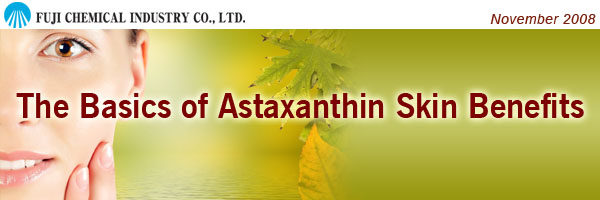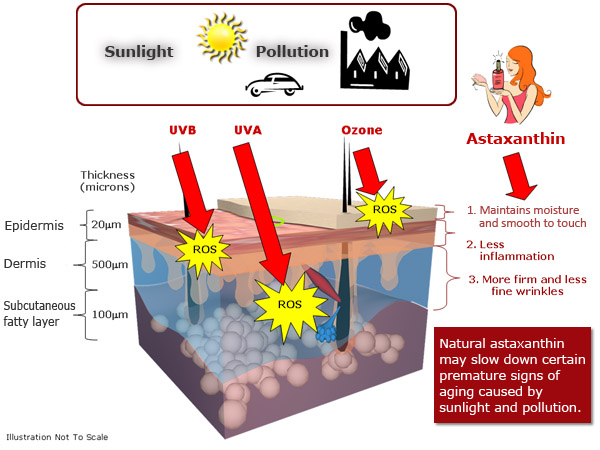|
|
|
|
|
|
|
|
|
Attention cosmetic and personal care formulators! In this month’s newsletter, we report on an area that has been overlooked this year; the anti-aging benefits of astaxanthin for skin. We present a summary of the topical benefits of natural astaxanthin on skin. Aside from the normal course of aging, human skin is constantly subjected to environmental attacks which strip away moisture, induce premature wrinkles and increase vulnerability for age-spots. Environmental factors like sunlight , ozone and other pollutants reduce the skin’s resistance and make skin look older than it really is. A closer look at the mechanism of action reveals that those factors cause excessive levels of Reactive Oxygen Species (ROS) to build up in skin and inflict damage at a cellular level. One way is to cut down the presence of ROS by topical treatment. Research shows that natural astaxanthin from Haematococcus microalgae is a powerful carotenoid that penetrates skin and protects each dermal layer from ROS related damage.
1. ROS causes lipid peroxidation of the skin top layer (stratum corneum) which reduces the natural barrier function. Astaxanthin scavenges the ROS in the skin surface which ultimately helps reduce moisture loss and keeps skin smooth. 2. Natural astaxanthin reduces UVB induced inflammation probably via the NF-kB kinase dependant pathway. The less stressed the skin is the better. 3. Natural Astaxanthin assists skin renewal by minimising effects of ROS. Too much ROS will breaks down the collagen matrix and increase levels of matrix metalloproteinases (MMP) leading to wrinkle formation and loss of elasticity. Incorporating the powerful carotenoid
astaxanthin into cosmetics will increase the antioxidant status of skin and
reduce the effects of ROS at the cellular level. On the surface, skin will
look and feel more youthful. For more information please contact Fuji
Chemical. |
|
References |
|
Fuji Chemical
Industry, |
|
For more
information, please contact us.
If you would prefer not to receive email newsletter, or you’ve changed
your email address, please click here |

